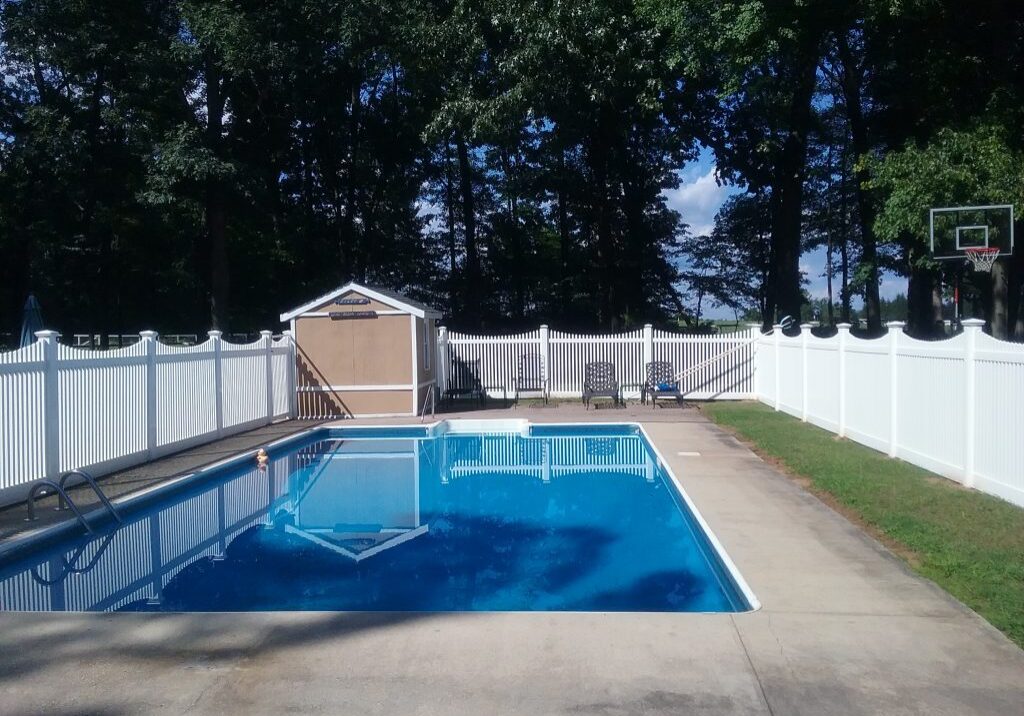All Categories
Featured

Secure fencing not just enhances the safety and security and personal privacy of your residential or commercial property but also plays a key duty in its general visual. Nonetheless, among the most crucial considerations when planning a fence project is the price. The cost of a fence relies on the material you select, the size of your home, and the complexity of the installation. Recognizing the typical costs of different fence materials can aid you make an enlightened choice that fits your budget and style preferences. Below is a breakdown of common fence products and their linked expenses.
- Wooden Secure fencing. Wood remains one of the most preferred fencing materials because of its traditional look and flexibility. The cost of wood secure fencing differs based upon the kind of wood used, such as pine, cedar, or redwood.
Average Cost: $15--$ 50 per linear foot. Elements Influencing Price: Pressure-treated timber is extra affordable, while premium options like cedar or redwood are more expensive. The design of the fence, such as picket, divided rail, or personal privacy, additionally affects the price. While wood fencings are cosmetically pleasing, they call for normal maintenance, consisting of securing, discoloration, or paint, to prevent weather damage and expand their lifespan.
- Vinyl Secure fencing. Vinyl secure fencing is a durable, low-maintenance option that is immune to weather, insects, and rot. It's an outstanding option for homeowners searching for durability without considerable upkeep.
Average Price: $20--$ 60 per straight foot. Variables Affecting Cost: Expenses can differ depending on the thickness of the vinyl, the style (e.g., picket, privacy, or ranch), and any kind of decorative components. Though plastic fencing has a greater upfront cost contrasted to timber, its durability and minimal upkeep make it cost-efficient with time.
- Chain Web Link Secure Fencing. Chain web link is a budget-friendly and functional choice for secure fencing, usually made use of for safeguarding huge locations or industrial residential or commercial properties. While it does not supply much privacy, it is long-lasting and easy to set up.
Average Expense: $10--$ 30 per straight foot. Factors Affecting Cost: Coated chain web link (vinyl-coated or galvanized) is more pricey yet offers additional resilience and visual allure. This product is excellent for property owners seeking an economical fencing solution that prioritizes performance.

- Aluminum Secure fencing. Light weight aluminum fence is a stylish, rust-resistant product that resembles the look of wrought iron without the high upkeep or expense.
Typical Expense: $25--$ 70 per direct foot. Elements Affecting Cost: The rate varies depending upon the layout, elevation, and top quality of the material. Ornamental or ornamental designs have a tendency to cost more. Aluminum fencing is sturdy and light-weight, making it a prominent selection for buildings with sloped terrain.
- Wrought Iron Fencing. Wrought iron fencing is recognized for its strength, longevity, and elaborate layouts. It adds a touch of class to any type of building, yet it features a greater price tag.
Typical Price: $30--$ 100 per straight foot. Factors Affecting Expense: Personalized styles and intricate details enhance the expense. In addition, wrought iron calls for routine upkeep to stop rust. This material is a terrific option for property owners seeking a fence that combines security and style.
- Compound Fence. Composite secure fencing, made from a blend of timber fibers and recycled plastic, offers the look of wood with the toughness of plastic. It's a environment-friendly and low-maintenance alternative.
Ordinary Cost: $25--$ 55 per straight foot. Aspects Affecting Expense: Costs composite products or elaborate styles will certainly boost the rate. Compound fencing is ideal for those who want a sustainable fencing remedy without jeopardizing on aesthetic appeals.
- Bamboo Fence. Bamboo is an environmentally friendly option that adds an one-of-a-kind, exotic appearance to your residential property. It's fairly economical and lightweight yet not as long lasting as various other materials.
Average Cost: $12--$ 30 per linear foot. Elements Affecting Cost: Rolled bamboo fence is usually cheaper than specific bamboo posts. While bamboo is fantastic for ornamental objectives, it might not hold up against harsh weather condition as well as other products.
- Stone or Stonework Secure Fencing. Stone or masonry fence uses unrivaled durability and an ageless look. These fences can last for decades however come with a dramatically greater price.
Ordinary Cost: $50--$ 150 per direct foot. Factors Affecting Expense: The kind of stone or brick used, the height of the fence, and the complexity of the design influence the cost. This kind of fence is best for homeowners trying to find a long-term investment that includes significant curb charm and property value.
Additional Prices to Take Into Consideration. Past the product, there are extra expenses to represent in your secure fencing project:
Labor: Setup prices range from $5 to $20 per straight foot, depending on the product and intricacy. Gates: Including gates typically sets you back $150--$ 1,000 or even more, depending upon the layout and material. Allows: Some areas call for licenses for fencing installation, which can add $50--$ 400 to the total price. Conclusion. Selecting the appropriate fence material depends on your budget plan, design preferences, and the key function of the fence. By evaluating the costs and advantages of each product, you can make a decision that improves both the capability and look of your building.
Latest Posts
Explore the Best Auto Repair Offers in Montclare, Chicago
Published May 28, 25
1 min read
Don’t Miss Exclusive Auto Repair Deals in Chicago at Montclare Auto Repair
Published May 23, 25
1 min read
Uncover the Best Auto Repair Discounts in Montclare, Chicago
Published May 21, 25
1 min read